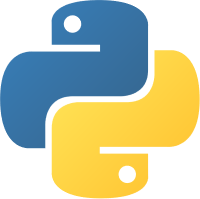How to Reverse a String in Python
What is Reversing a String?
Reversing a string means changing the order of its characters so that the last character becomes the first, and the second last becomes the second as shown below.

Reversing a string is a common operation in Python and is used in various applications such as data manipulation, text processing, and algorithm challenges. If you are preparing for a Python interview I am sure you are gonna face this question during the interview process.
Hence, In this Python Tutorial, we will learn how to reverse a string in Python using slicing, loops, and built-in functions. In short, we will explore multiple methods with examples to reverse strings in Python efficiently. Only 10% of learners become Python experts. Be one with our Free Python Online Course—start your journey now!
5 Ways to Reverse a String in Python
- Using Slicing ([::-1]): Slicing is the most efficient method to reverse a string in Python.
- Using a Loop: Iterates through the string and prepends characters to build the reversed string
- Using reversed() Function: Converts the string into an iterator and joins the reversed characters.
- Using Recursion: Calls the function recursively, removing the last character each time.
- Using a Stack: TheLast-In-First-Out(LIFO) property of a stack is used to reverse the string.
1. Using String Slicing (Recommended Method)
Slicing in Python provides the easiest way to reverse a string using slicing:
# Reverse a string using slicing
def reverse_string(s):
return s[::-1]
print(reverse_string("hello")) # Output: "olleh"
Output:
ollehHow it Works?
Why use slicing?
- It is concise and efficient.
- It does not require additional loops or functions.
2. Using a Loop (Iterative Method)
If you prefer a more traditional approach, you can use a loop to reverse a string
# Reverse a string using a loop
def reverse_string(s):
reversed_s = ""
for char in s:
reversed_s = char + reversed_s # Prepend each character
return reversed_s
print(reverse_string("Python")) # Output: "nohtyP"
Output:
nohtyP
How it Works?
- An empty string reversed_s is initialized.
- Each character from the original string is prepended to reversed_s.
- This results in the characters being stored in reverse order.
Pros and Cons
Simple to understand and Slightly less efficient than slicing due to string concatenation overhead.3. Using the reversed() Function
Python’s built-in reversed() function can also help reverse a string:
# Reverse a string using reversed() and join()
def reverse_string(s):
return "".join(reversed(s))
print(reverse_string("Python")) # Output: "nohtyP"
Output:
nohtyP
How it Works?
- reversed(s) returns an iterator that processes the string in reverse.
- "".join(reversed(s)) converts the reversed iterator into a string.
Why use reversed()?
4. Using Recursion
Python Recursion is another way to reverse a string:
# Reverse a string using recursion
def reverse_string(s):
if len(s) == 0:
return s
return s[-1] + reverse_string(s[:-1])
print(reverse_string("Python")) # Output: "nohtyP"
Output:
nohtyP
How it Works?
- The function keeps calling itself with s[:-1] (excluding the last character) until the base case (len(s) == 0) is met.
- It then concatenates the last character of each recursive call in reverse order
Pros and Cons
5. Using Stack (LIFO Approach)
A stack follows a Last In, First Out (LIFO) principle, making it a useful way to reverse a string:
# Reverse a string using a stack
def reverse_string(s):
stack = list(s)
reversed_s = ""
while stack:
reversed_s += stack.pop()
return reversed_s
print(reverse_string("Python")) # Output: "nohtyP"
Output:
nohtyP
How it Works?
- The string is converted into a list (stack behavior).
- pop() function removes characters from the end of the list and appends them to reversed_s.
- This results in the string being reversed.
Why use a stack?
Which Method Should You Use?
| Method | Performance | Ease of Use | Best Use Case |
| Slicing ([::-1]) | Fastest | Easiest | General use |
| Loop | Moderate | Simple | Beginners learning Python |
| reversed() Function | Efficient | Readable | Works for both strings & lists |
| Recursion | Slow for large inputs | Complex | Understanding recursion |
| Stack | Slow | Extra memory usage | Learning data structures |
Conclusion
Reversing a string in Python can be achieved in multiple ways, with slicing ([::-1]) being the most efficient and widely used method. However, other approaches like loops, reversed(), recursion, and stacks are also useful for different scenarios.
85% of companies prioritize Full-Stack Python Developers. Join our Full-Stack Python Developer Training and be their top pick!
| Practice more with the following articles |
| Lambda Function in Python |
| Fibonacci Series in Python |
| Calculate Armstrong Number in Python |
| Factorial Calculator in Python |
FAQs
Take our Python skill challenge to evaluate yourself!

In less than 5 minutes, with our skill challenge, you can identify your knowledge gaps and strengths in a given skill.






